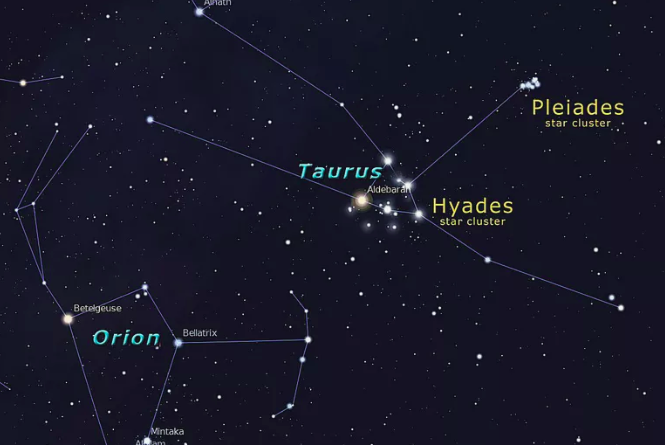How the Night Sky Changes: Getting the Most out of the Stars in Light-Polluted NYC
This winter will be the last chance to get a glimpse of Mars before it disappears below the horizon for the next two years. The planet, much brighter and higher than Saturn, reached its closest approach to Earth this past summer. If you want to spot this bright orange star before its vacation from the night sky, turn to the south around dusk or night fall.
It won’t be hard to spot as during December; Mars is said to be brighter than a 1st-magnitude star.
As most can guess, New York City is not the best place for stargazing. Using the Bortle Dark Sky Scale, which rates the dark sky based on light pollution on a scale of 1-9 (9 being inner city sky), New York City falls under category 9. This limits how much the naked eye is able to see.
To find out where your hometown or weekend getaway falls on the scale, visit www.lightpollutionmap.info. This website offers statistics per country, measuring of distance, as well as a comprehensive world map of light pollution.
|| Photo credits to a screen grab from www.lightpollutionmap.info
If you’re looking to get outside of the city, get a better glimpse of the Milky Way or even see planets such as Mars, Dr. Joshua Hershey, who teaches Scientific Reasoning at The King’s College, offered some insight.
“If you just want to see a lot of the sky away from the city, any open space will do. I did a stargazing evening at Liberty Park, which is beautiful, it’s in Jersey city, right across the city across the bay so you can get there pretty quickly and pretty cheaply.”
Understandably, this location still has to deal with the city’s light pollution. To get away from that, Hershey offers two areas to turn our direction.
“There are some remarkably dark spots within a half a days drive in Pennsylvania, one of the darkest areas in the Eastern United States. But you can actually get to a pretty dark site by taking the Metro North Harlem Line. If you take the Metro North Harlem Line, you can get to some really dark skies - Bortle class 4. Which is dark enough to see the Milky Way with the naked eye.”
While the Milky Way is visible in a class 4 area, any higher than that it will be much harder. However there is another problem when it comes to looking for the Milky Way.
“If [anyone] wants to see the Milky Way, it has to be a moonless night, or close to a new moon, otherwise the moonlight will drown it out,” Hershey said.
As the last full moon was November 22, 2018, the next new moon will be around December 7 or 8. During this period, there is about a three - five day window when the sky will be dark enough to see the Milky Way.
If you’re more interested in meteor showers or comets rather than just constellations and planets, you are in luck.
Around December 16, 2018, The comet 46P/Wirtanen is expected to reach naked-eye visibility in its closest approach to Earth. The comet will be positioned between the Pleiades and Hyades star clusters.
Pictured to the left is the location of star clusters Hyades and Pleiades. If you are familiar with constellations Orion or Taurus, these two clusters will be easy to spot.
|| Photo credit to https://www.thoughtco.com/the-hyades-star-cluster-4025029
Around December 16, 2018, the comet 46P/Wirtanen is expected to reach naked-eye visibility in its closest approach to Earth. The comet will be positioned between the Pleiades and Hyades star clusters. There can be some difficulty finding such star clusters or constellations if you’re not originally familiar with them.
For iPhone users, Night Sky seems to be the best app for beginner stargazers. Using “point and shoot” technology, this app can easily identify specific constellations, planets and satellites. Android users have a beginner option as well through Sky Map. Hershey has found this app to be the “easiest one to install and use.”
More advanced apps like Sky Safari, which is free to download for Android and Apple users, goes into much more detail by allow users to visualize 3D locations of stars, offers history and mythology behind stars and planets as well as offering guided audio tours and correct pronunciations of hundreds of celestial objects.
Hershey warns students that this app has a steeper learning curve, takes a while to configure and “shows too much sometimes.”
Stellarium and Celestia are both free and open source programs which run on Windows, Mac and Linux. Celestia allows the user to fly through the solar system, visit stars and planets and observe celestial events in real time.
Hershey plans on hosting more stargazing trips in the Spring like he did in the fall, and possibly over Christmas Break, all weather permitting. One of his main goals is to put together a trip with really dark skies in order to see some other galaxies. If you would like to attend one of the stargazing trips, email Hershey at: jhershey@tkc.edu.





